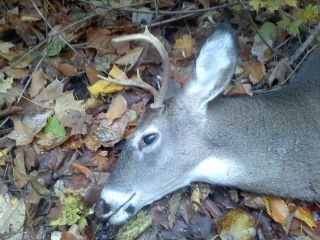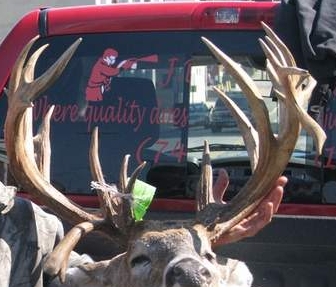
The Facebook post was a definite cause for celebration. One of my friends had just posted a photo of a whitetail buck he had shot this weekend. He had been bowhunting, and shot a beautiful 6-point buck. I was one of the first people to "like" the post. Several others had also posted complimentary comments. Oh, but course, it didn’t take long for the naysayers to start chiming in.
"Young buck," said one individual.
"Puppy," wrote another.
That’s all it took, I’m sure, to take the wind out of the hunter’s sails.
As sad as it is, that’s what deer hunting has become for a lot of folks. Somewhere along the line, things got blurry. It doesn’t have to be this way.
I’m the first to celebrate a huge buck. Check out my posts, and they’re everywhere. It’s all about the deer; I don’t care who killed it. However, I’m equally all about deer in general. Doesn’t have to be measured in inches; only has to have a smiling hunter behind it. That’s not only what it’s all about; it’s what it should be all about.
I’ve heard all of the arguments:
"You should have let that deer grow another year!"
"Just think of what he could have been next year!"
"Why didn’t you just shoot a doe if you wanted meat?"
Deer hunting is much more complicated than such sound bites. For starters, if you think such thoughts, you assume you know what type of property the guy hunts. You assume you know what the deer density is in his region. You assume you know how many deer he’s shot in his life. You assume you know how long it’s been since he’s shot one.
We all know what happens when you assume.
Maybe he only has access to a small private parcel. Maybe he hunts public land. Maybe he’s got 10 kids and doesn’t give a rip about antlers. Maybe he actually works for a living and only gets to hunt a couple days each fall. Maybe he loves eating venison and his freezer happens to be empty.
It doesn’t have to do with "just killing something." Deer hunting is an evolutionary process. To many hunters (inexperienced or not), a 6-point yearling buck walking through the woods is the equivalent of the biggest deer in the world. Asking them to pass up small bucks is a sure recipe for turning them off to hunting. In a way, it’s a lot like today’s catch-and-release mentality in fishing. The same guys who preach, "Throw ’em all back," are the same ones who have photo albums stacked with images from 20 years ago that show them holding sagging stringers of bass, pike and walleyes. It’s a classic case of, "Do as I say, not as I did."
My strong feelings on this subject probably stem from the fact that I’ve seen many sons and daughters of avid hunters who have either dropped out of hunting altogether or never really embraced it from the start because they’re sick of hearing such garbage from folks who are supposed to be their blood brothers.
Whatever the reasons, it doesn’t matter. This guy chose to use his tag on that deer. And he’s proud of it. If you’re happy for him, let him know it. If you are holier than thou, keep your mouth shut. And keep your fingers off the keyboard.


 One of North America’s most effective deer management techniques was kicked to the curb yesterday when Wisconsin lawmakers voted overwhelmingly to prohibit state deer managers to use earn-a-buck regulations for future deer seasons. The state had used the regulations on and off for most of the past decade. The regulation forced hunters to bag and register an antlerless deer before "earning" the right to use their antlered buck tags. In Wisconsin, hunters are allowed to shoot one buck with a bow and one with a firearm.
One of North America’s most effective deer management techniques was kicked to the curb yesterday when Wisconsin lawmakers voted overwhelmingly to prohibit state deer managers to use earn-a-buck regulations for future deer seasons. The state had used the regulations on and off for most of the past decade. The regulation forced hunters to bag and register an antlerless deer before "earning" the right to use their antlered buck tags. In Wisconsin, hunters are allowed to shoot one buck with a bow and one with a firearm.
